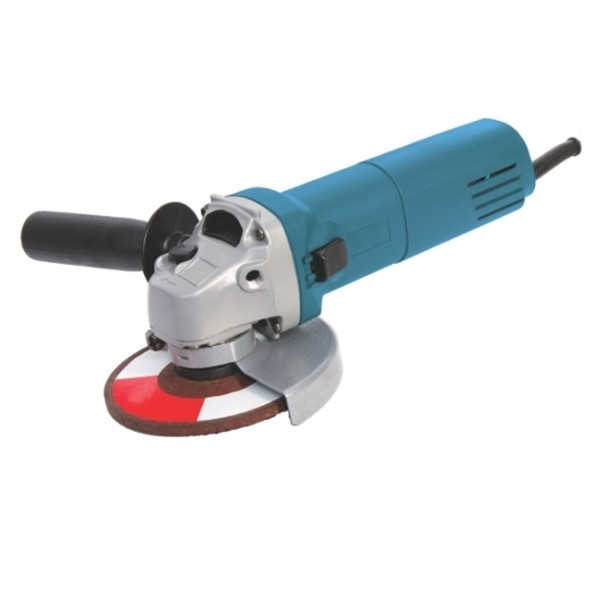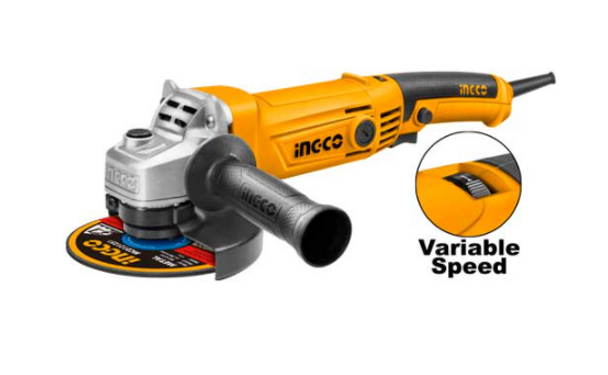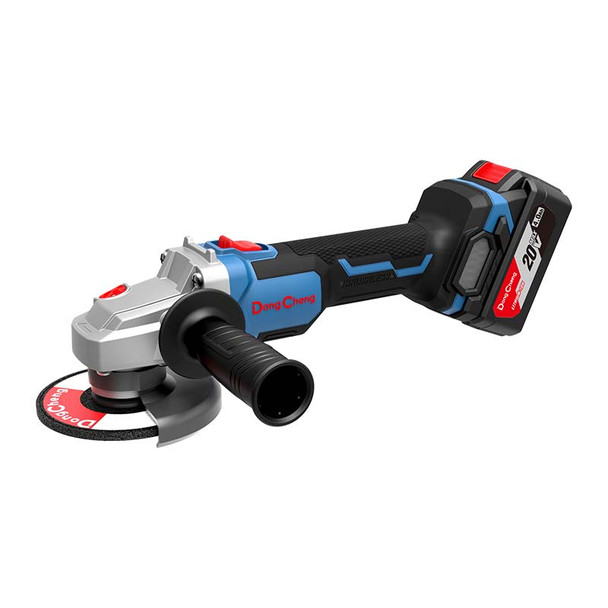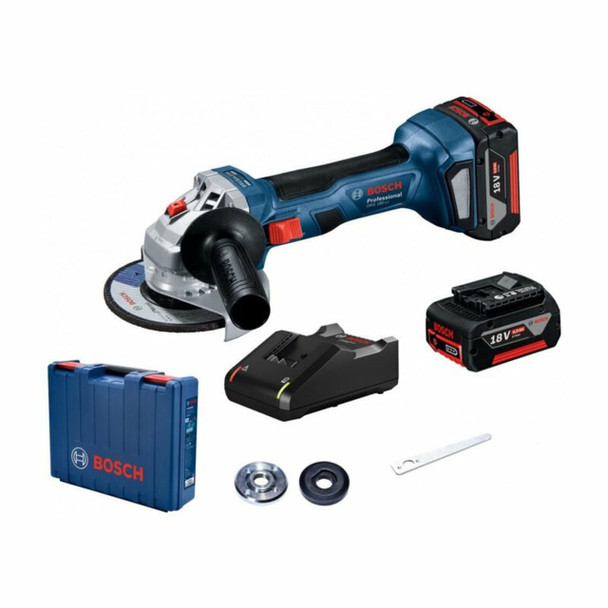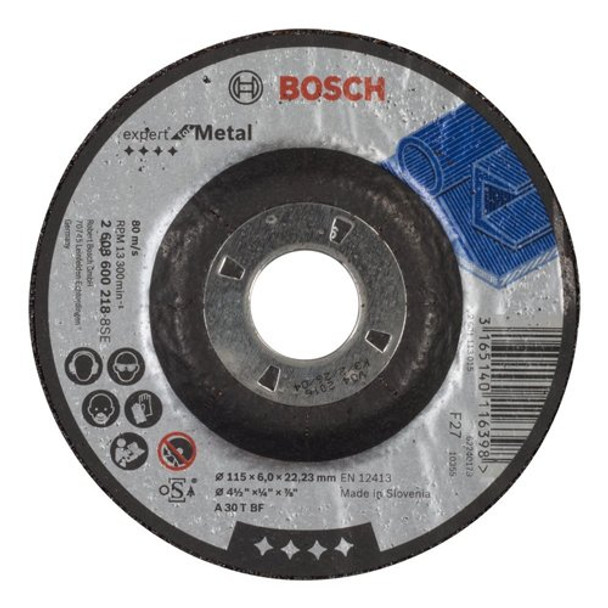Angle Grinder Safety Tips: Protecting Yourself and Your Workpiece
Angle grinders are powerful tools that can be incredibly versatile when it comes to cutting, grinding, and polishing a variety of materials. However, they are not to be taken lightly. The intense speed and force with which these tools operate can be both a boon and a potential hazard if not handled with care. One essential safety tip when using angle grinders is to always wear appropriate safety gear, including safety glasses, hearing protection, gloves, and a dust mask. This ensures that you protect yourself from potential hazards like flying debris, noise, and harmful dust particles.
The Dongcheng Angle Grinder stands as a beacon of safety and precision. Its ergonomics, protective features, reliable brake system, and durability-focused design embody the brand's unwavering commitment to user well-being. With a Dongcheng Angle Grinder in hand, you're not just equipped for top-quality work – you're prioritizing your safety at every turn.
In this guide, "Angle Grinder Safety Tips: Protecting Yourself and Your Workpiece," we will delve into the crucial aspects of using angle grinders safely. Whether you're a professional tradesperson or a DIY enthusiast, understanding and implementing these safety measures will not only safeguard your well-being but also ensure the quality and precision of your work. Let's explore the essential precautions and best practices that will help you make the most of this versatile tool while minimizing the risks involved.
DongCheng Angle Grinder DSM125A
Safety Tips to consider before operating an Angle grinder
1. Use Safety Gear and Equipment
Safety gear and equipment are crucial components of any workplace where hazardous tasks are undertaken. They play a pivotal role in protecting workers from potential harm and ensuring a safe working environment. In this section, we will discuss the essential safety gear and equipment, focusing on personal protective equipment (PPE) and workpiece clamping devices, and emphasize the importance of wearing the right safety gear.
a) Personal protective equipment (PPE)
One of the most important aspects of angle grinder safety is using the proper personal protective equipment (PPE). PPE can protect you from various hazards, such as flying debris, sparks, noise, dust, and heat. Here are some of the PPE items that you should wear when using an angle grinder:
- Safety glasses or a face shield: These will protect your eyes from any flying particles, objects or sparks that could hit them. You should always use a face shield and safety glasses when using an angle grinder . This is because the grinding disc can shatter or break, sending fragments flying in different directions. Also, some materials can produce sparks or flames when ground, which could ignite your hair or clothing. Therefore, it is essential to cover your eyes and face with suitable protection.
- Ear muffs or ear plugs: These will reduce the noise level and prevent hearing damage. Angle grinders can produce loud sounds that exceed 85 decibels (dB), which is the limit for safe exposure. Prolonged exposure to such noise can cause temporary or permanent hearing loss, tinnitus, or stress. Therefore, it is advisable to wear ear muffs or ear plugs that can reduce the noise by at least 20 dB.
- Gloves: These will protect your hands from cuts, abrasions, and heat. You should choose gloves that fit well and provide good hand movement. Leather gloves are recommended for most grinding applications . This is because leather is durable and resistant to heat and sparks. It can also prevent injuries from sharp edges on the workpiece or the grinding disc. You should also inspect your gloves regularly for wear and tear and replace them if necessary.
- Flame retardant or resistant clothing: These will protect your body from burns caused by sparks or heat. You should avoid wearing loose-fitting clothing that could get caught in the grinding disc. Natural fibre clothing and an apron are also advisable . An apron can also provide an extra layer of protection for your chest and abdomen. You should also tuck in your shirt and tie back your hair if it is long.
- Safety boots with steel toecaps: These will protect your feet from lacerations, impact, and compression. You should also avoid wearing sandals or open-toed shoes . This is because your feet are exposed to falling objects, such as the workpiece or the grinding disc, which could cause serious injuries. Steel toecaps can prevent crushing injuries from heavy objects or accidental kicks. Safety boots can also provide traction and stability on slippery or uneven surfaces.
b) Consider using Workpiece clamping devices for Maximum Safety
Workpiece clamping devices are essential tools in various industries, particularly in metalworking, woodworking, and construction. They serve the critical function of securely holding workpieces in place during machining, cutting, or fabrication processes. While they may not be personal protective equipment (PPE) In a traditional sense, they play a significant role in workplace safety.
Types of Workpiece Clamping Devices:
Workpiece clamping devices come in a variety of forms, including:
- Vices: Bench vices, machine vices, and drill press vices are commonly used in metalworking to securely hold materials.
- Clamps: Quick-action clamps, bar clamps, C-clamps, and pipe clamps are versatile tools used in woodworking and metalworking.
- Magnetic Holders: Magnetic chucks and holders are prevalent in machining operations to secure ferrous workpieces.
- Vacuum Systems: Vacuum chucks and vacuum clamps are used in industries like woodworking and CNC machining.
- Jigs and Fixtures: Custom-made jigs and fixtures are employed to hold workpieces with intricate shapes or for mass production.
INGCO 5" Angle Grinder (straight handle ) - (AG10108)
2. Make sure you prepare Your Work Area
Before you start using an angle grinder, you need to set up a safe work area. This will help you avoid accidents and injuries, as well as protect your workpiece from damage. Here are some tips on how to prepare your work area:
- Clearing clutter and obstacles: Make sure there is enough space around you to move freely and comfortably. Remove any objects that could interfere with your work, such as tools, cords, wires, or debris. Keep flammable materials, such as paper, cloth, or wood, away from the work area. They could catch fire from sparks or heat generated by the angle grinder.
- Adequate lighting: Ensure that the work area is well-lit and that you can see clearly what you are doing. Avoid working in dark or dim conditions, as this could affect your visibility and accuracy. Use additional lighting sources if necessary, such as lamps or flashlights.
- Ventilation: Provide adequate ventilation in the work area to prevent the accumulation of dust, fumes, or smoke. These could irritate your eyes, nose, throat, or lungs, and cause health problems. Use a fan, an exhaust system, or open windows and doors to improve air circulation. Wear a respirator or a dust mask if the ventilation is insufficient or the material you are working on produces harmful substances.
3. Carry out an Angle Grinder Pre-Operation Inspection.
Before you use an angle grinder, you should inspect it and make sure it is in good condition and ready for operation. This will help you avoid malfunctions, breakdowns, or accidents that could result from using a faulty or poorly maintained grinder. Here is a checklist of things to inspect before using the angle grinder:
- Grinder condition and maintenance: Check the grinder for any signs of damage, such as cracks, dents, or loose parts. Make sure the grinder is clean and free of dust, grease, or debris. Lubricate the moving parts and replace any worn or broken components. Sharpen or change the grinding disc if it is dull or damaged .
- Power source and cord: Check the power source and cord for any defects, such as frayed wires, exposed insulation, or loose connections. Make sure the power source is compatible with the grinder’s voltage and frequency. Use an extension cord that is suitable for outdoor use and has a sufficient length and rating. Avoid using multiple extension cords or adapters .
- Safety features and guards: Check the safety features and guards for proper functioning and alignment. Make sure the on/off switch is working and can be easily accessed. Make sure the spindle lock is engaged and the disc is securely attached. Make sure the guard is adjusted to cover at least half of the disc and protect you from sparks and debris. Make sure the handle is firmly attached and comfortable to hold.
4. Never Customize your Angle Grinder
One of the safety tips for using an angle grinder is to not customize or modify it in any way. This means that you should not alter the size, shape, or function of the grinder or the disc, or use any attachments or accessories that are not designed for it. Customizing or modifying your angle grinder can compromise its performance, stability, and safety, and lead to accidents or injuries. Here are some of the reasons why you should avoid doing so:
- Customizing or modifying your angle grinder can void its warranty and make it ineligible for repair or replacement by the manufacturer. This can cost you money and time, and leave you without a working tool.
- Customizing or modifying your angle grinder can increase the risk of injury to yourself and others. This can happen because:
- Using a larger disc than the grinder can handle can cause the disc to shatter or break, sending fragments flying in different directions. These fragments can injure your eyes, face, hands, or body, or damage your workpiece or surroundings.
- Using a homemade guard or handle can reduce your control and protection, and expose you to sparks or debris. These sparks or debris can burn your skin or clothing, or ignite flammable materials.
- Using an attachment or accessory that is not designed for your grinder can cause malfunction, jamming, or kickback. These problems can result in loss of control, injury, or damage to the workpiece.
Always use the angle grinder as it is intended and follow the manufacturer's instructions and specifications. This will ensure that your angle grinder works properly and safely, and that you achieve the best results possible.
DongCheng Cordless brushless angle grinder -DCSM03-100
Safe Angle grinder Operation Techniques
Once you are properly kitted, have prepared your work area and inspected your angle grinder, you can start using it safely and effectively. Here are some tips on how to handle the angle grinder and perform cutting and grinding techniques:
1. Holding the grinder:
Holding the angle grinder correctly is crucial to maintaining control and preventing accidents. Follow these guidelines:
- Two-Handed Grip: Always use a two-handed grip on the grinder. Your dominant hand should grasp the main handle, while the other hand stabilizes the auxiliary handle. This grip provides stability and control, reducing the risk of the grinder slipping or jerking.
- Maintain a Firm Grip: Ensure a firm, non-slip grip on the handles, but avoid over-gripping, which can lead to fatigue or reduced control. Keep your fingers and hands away from the trigger to prevent accidental starts.
- Keep Handles Dry: Make sure your hands and the handles are dry to maintain a secure grip. Moisture or grease can cause slipping and loss of control.
2. Using the right disc:
Selecting the appropriate disc for your specific task is vital for safe and effective operation:
- Disc Compatibility: Check that the disc you intend to use is compatible with your angle grinder. The grinder's user manual should provide information on suitable disc sizes and types.
- Match Disc to Material: Choose a disc that is designed for the material you plan to cut or grind. Abrasive discs, for example, are suitable for metal, while masonry discs are designed for concrete and stone. Using the wrong disc can be dangerous and lead to accidents.
- Inspect the Disc: Before operation, examine the disc for any signs of damage or wear. If you notice cracks, chips, or excessive wear, replace the disc immediately to prevent breakage during use.
3. Avoiding Kickback:
Kickback is a sudden, violent reaction that can occur if the angle grinder's wheel binds or jams during operation. It can result in the grinder forcefully jerking back towards the operator, posing a significant safety hazard. To avoid kickback, consider the following guidelines:
- Proper Disc Orientation: Always ensure the disc is correctly installed and rotating in the direction indicated by the arrow on the disc. Using a disc with improper orientation can increase the risk of kickback.
- Position the Grinder: Maintain a stable and balanced posture, standing to the side of the grinder's rotation, not in line with it. This positioning ensures that in case of kickback, the grinder moves away from your body.
- Light Pressure: Apply gentle, even pressure when cutting or grinding. Avoid forcing the grinder into the material, as this can cause binding and increase the risk of kickback. Let the tool do the work.
- Anti-Kickback Guard: Ensure that the angle grinder is equipped with an anti-kickback guard. This safety feature is designed to minimize the impact of kickback by deflecting the grinder away from the operator.
4. Maintaining a Steady Hand:
A steady hand is essential to achieve precise and safe cuts or grinds. Here's how to maintain control:
- Ensure you are in a Comfortable Stance: Stand with your feet shoulder-width apart to establish a stable and balanced stance. Keep your body well clear of the cutting or grinding path.
- Control the Depth: Adjust the depth of cut or grind to ensure that the disc makes consistent contact with the material without excessive force. Avoid pushing or tilting the grinder excessively, as it can result in loss of control.
- Progressive Movements: Move the grinder smoothly in the desired direction, using steady, progressive motions. Do not jerk or abruptly change the direction, as this can lead to uneven cuts or grinds.
- Maintain Focus: Stay focused on the task at hand. Avoid distractions, and never operate the angle grinder if you are fatigued or not feeling alert.
- Periodic Breaks: For longer or intensive tasks, take regular breaks to rest and regain focus. Fatigue can lead to diminished control and increased risk of accidents.
Bosch Cordless Angle Grinder GWS 180-LI Professional
Some Common Angle Grinder Hazards and How to mitigate them.
Angle grinders are powerful and versatile tools, but they also pose some risks and hazards that you should be aware of and avoid.
1. Flying debris:
One of the most common hazards of angle grinders is flying debris, such as metal shavings, sparks, or dust. These can injure your eyes, skin, or respiratory system, or damage your workpiece or surroundings. To prevent flying debris, you should:
- Wear safety glasses or a face shield and gloves to protect your eyes and hands.
- Use a guard to cover at least half of the disc and direct the debris away from you.
- Use a dust extraction system or a vacuum cleaner to collect the dust and dispose of it safely.
- Keep flammable materials away from the work area and have a fire extinguisher nearby.
2. Electrical hazards:
Another common hazard of angle grinders is electrical hazards, such as electric shocks, electrocution, or fire. These can occur due to faulty wiring, wet conditions, or contact with live wires. To prevent electrical hazards, you should:
- Check the power source and cord for any defects and use an extension cord that is suitable for outdoor use.
- Use a residual current device (RCD) or a ground fault circuit interrupter (GFCI) to protect yourself from electric shocks.
- Keep the grinder dry and do not use it in wet or damp conditions.
- Avoid cutting or grinding near live wires or pipes that could contain electricity, gas, or water.
3. Burns and fire:
Angle grinders can generate a lot of heat and sparks, which can cause burns to the skin or ignite flammable materials. To prevent burns and fire, you should:
- Wear flame retardant or resistant clothing and gloves to protect your body and hands.
- Keep a safe distance from the workpiece and the disc, and do not touch them until they cool down.
- Keep flammable materials away from the work area and have a fire extinguisher nearby.
- Use the correct disc for the material and task, and avoid overheating the disc by applying too much pressure or speed.
4. Vibration:
Angle grinders can produce high levels of vibration, which can affect the user’s health and performance. Vibration can cause hand-arm vibration syndrome (HAVS), which is a condition that affects the nerves, blood vessels, and muscles of the hand and arm. Symptoms of HAVS include tingling, numbness, pain, and reduced grip strength. To reduce vibration, you should:
- Choose a low-vibration grinder and disc, and check their condition before use.
- Use anti-vibration gloves and handles to dampen the vibration.
- Limit the duration and frequency of using the grinder, and take regular breaks.
- Maintain a relaxed posture and grip, and avoid gripping the grinder too tightly.
Bosch Metal Grinding Disc Expert With Depressed Centre A 30 T BF, 115 mm, 6,0 mm
What To Do In Case Of An Emergency
Even if you follow all the safety tips and precautions, accidents and injuries can still happen when using an angle grinder. Therefore, you should be prepared to deal with them and follow the appropriate emergency procedures. Here are some steps to follow in case of an accident or injury:
First Aid for Cuts and Burns:
Accidents with angle grinders can lead to cuts and burns, and immediate first aid is crucial to minimize the severity of the injury. Here are the steps to follow:
a. Assess the Situation: Before providing any assistance, assess the scene for potential dangers. Ensure that the grinder is turned off and unplugged to prevent further injuries.
b. Prioritize Safety: If the injured person is in immediate danger due to, for example, an electrical hazard, move them to a safe location.
c. Control Bleeding: For cuts and lacerations, apply direct pressure to the wound with a clean cloth or bandage. Elevate the injured area if possible to reduce bleeding.
For minor burns, rinse the affected area with cool (not cold) running water for about 10-20 minutes.
Do not use ice or adhesive bandages on burns, as it can cause more harm.
Cover the burn with a sterile, non-stick dressing or a clean cloth.
Frequently Asked Questions
Q1 What is an angle grinder?
A: An angle grinder, also known as a disc grinder or side grinder, is a handheld power tool used for cutting, grinding, and polishing various materials, primarily metal, stone, and concrete.
Q2 What are the common uses for angle grinders?
A: Angle grinders are versatile tools used for tasks such as cutting metal, grinding welds, removing rust or paint, shaping stone or concrete, and sharpening tools, among others.
Q3 What safety precautions should I take when using an angle grinder?
A: Wear appropriate personal protective equipment, including safety glasses, hearing protection, gloves, and a face shield. Secure your workpiece, keep bystanders at a safe distance, and use the grinder with care to prevent accidents.
Related Articles
WHAT ARE FLOOR GRINDING AND POLISHING MACHINES?
Angle Grinder Safety Tips: Protecting Yourself and Your Workpiece
10 Must-Have Cordless Power Tools for Home Renovation Projects
Industrial Power Tools: A Comprehensive Guide for Heavy-Duty Tasks
Conclusion
In this article, we have discussed some of the essential safety tips and precautions for using an angle grinder. We have covered topics such as: Preparing your workspace and using personal protective gear, proper grinder handling, risk mitigation, and emergency procedures for accidents or injuries.
Angle grinders are powerful and versatile tools that can help you with various tasks, such as cutting, grinding, polishing, or sanding. However, they also pose some dangers and challenges that require your attention and care. By following the safety tips and precautions we have provided, you can protect yourself and your workpiece from harm and achieve the best results possible. Remember to always use an angle grinder with caution and respect, and never compromise your safety or quality. For more information about how to safely handle an angle grinder or to buy one yourself, Contact us Today


